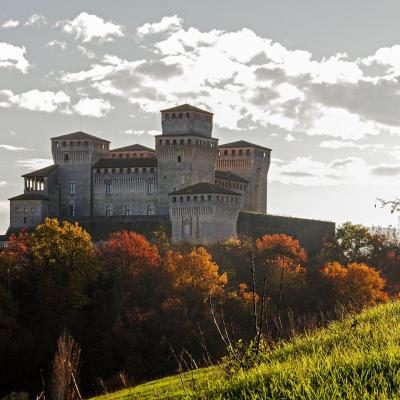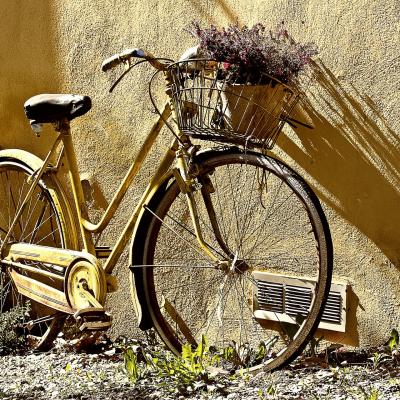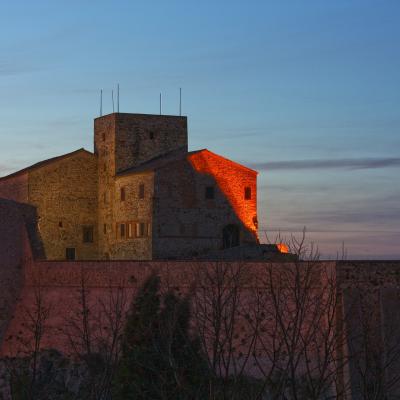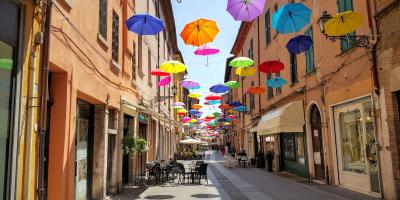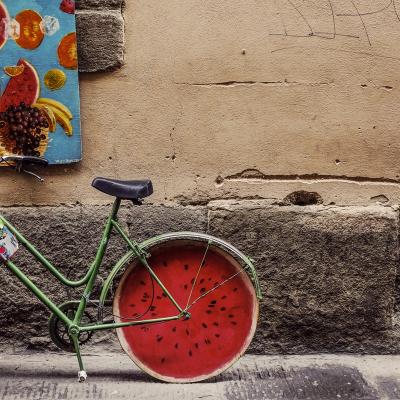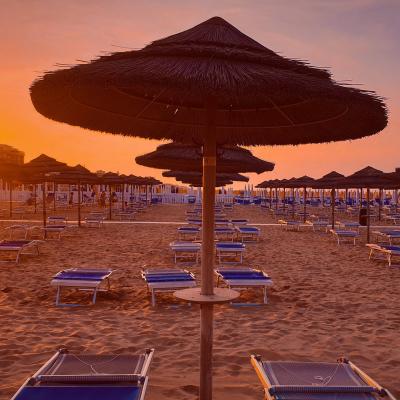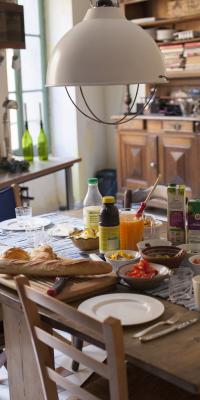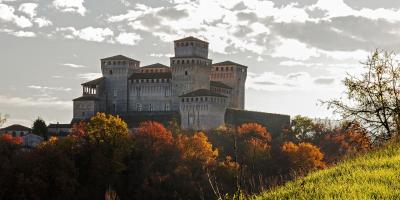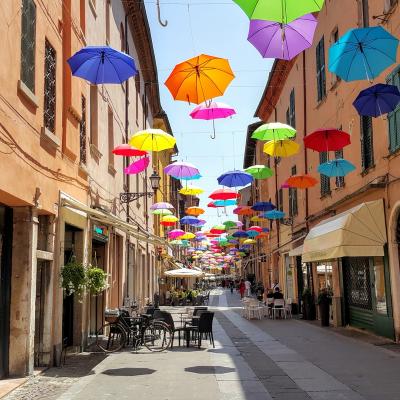Emilia Romagna
Emilia Romagna encompasses the Adriatic coast (110 km of beach), the Po Valley and the Apennines, has a territory that includes two areas that were once distinct: Emilia and Romagna. Emilia owes its name to the Via Aemilia, which was a major road artery built by the Romans to connect the cities of Placentia (Piacenza) and Ariminum (Rimini), while le Romagna is the term the Romans used to designate the area located near Ravenna. In ancient times, the morphology of the territory of Emilia Romagna was characterized by marshes, of which today we are left with the famous Comacchio Valleys in addition to some lakes.
Almost half of the territory is occupied by plains, while the rest of the land consists of hills and mountains. Thanks to this contrast between mountains and the sea, Emilia Romagna offers visitors breathtaking landscapes in a mixture of colors and scents of the land. You manage to combine culture and entertainment, relaxation and the discovery of ancient traditions. It is a very attractive region from a cultural and architectural point of view. It is home to numerous cities rich in art and culture: Bologna, Ravenna, Parma, Modena and Ferrara offer an extraordinary artistic, cultural and historical heritage. Emilia is the northwestern area where Bologna, Piacenza, Reggio Emilia, Parma Ferrara and Modena are located. While in Romagna are the cities of Ravenna, Rimini and Forlì - Cesena, among others.
What to see and what to do
A vacation in Romagna is a unique experience. A perfect machine, made up of facilities that work together, a tourism system that works together to offer a youthful vacation. On the Riviera Romagnola, the longest beach in Europe, the hospitality typical of these parts is the key to success and a boast to be exported all over the world. Places such as Rimini, Riccione, Cattolica are synonymous with relaxation and leisure, also defined in their own right as the capitals of fun. Shopping should also not be forgotten, on Viale Ceccarini in Riccione for example, the city's elegant living room, an ideal destination for those looking for the latest in the season. Ravenna is considered one of the most interesting cities in Emilia Romagna, unique for its complex of early Christian and Byzantine monuments.
Then if in addition to Romagna you wish to cross the border and explore Emilia, the experience becomes a journey into tradition. Art, history and cuisine unique to Italy. Emilia is Maranello with Ferrari, Bologna with Ducati, it is medieval towns like Grazzano Visconti, it is Ferrara UNESCO heritage, it is Parma with Parmigiano Reggiano cheese and the famous prosciutto crudo. Space is also given to wellness with a wide range of spas, including those in Salsomaggiore and Bagno di Romagna. For nature lovers there are 2 national parks, 14 regional parks and 11 regional reserves, to immerse yourself in the green and indulge in outdoor activities such as trekking, kayaking and biking.
Mountain
Emilia Romagna is traversed by the Tuscan-Emilian Apennines and the Tuscan-Romagnolo Apennines, has numerous high peaks such as Mount Cimone, Mount Falco, and Mount Falterona. In winter, in its fifteen resorts along 300 km of slopes, there are many facilities for winter sports: from snowboarding to kite surfing. The most popular ski resorts are the Cimone area, Corno alle Scale and Cerreto lakes. In summer in the Emilian mountains, sports such as trekking or tarzaning can be enjoyed.
Parks and Spas
Emilia Romagna has in its territory a great wealth of protected green, numerous are the parks: two national parks - that of the 'Appennino Tosco Emiliano and the National Park of Casentino Forests, Monte Falterona and Campigna ; an interregional park, fourteen regional parks, fourteen nature reserves.
Very famous are the thermal resorts of Emilia Romagna that are also real tourist destinations where it is possible to make visits to cities of art, wine and food excursions, trekking in parks and tours in castles scattered throughout the territory. Among the resorts certainly the most famous is Salsomaggiore Terme, followed by the equally famous Castrocaro Terme. And still worth visiting are Porretta Terme, Terme di Tabiano, Terme di Monticelli, Terme di S. Andrea Bagni, Terme di Cervarezza, and Castel San Pietro Terme. In the Casentino Forests National Park is Bagno di Romagna, where there is a path dedicated to children in the forest of the same name. Toward the sea are the Cervia spas with the saltiest pool in Europe, Punta Marina Terme or Rimini terme and Riccione Terme.
What to eat
No other region can boast so many typical and local dishes in the list of dishes that have become national dishes, representing the Italian culinary tradition abroad. Emilia Romagna is the kingdom of egg and stuffed pastas such as lasagna, tortellini and cappelletti, in all their variations. The most famous tomato sauce in Italian cuisine is definitely ragù Bolognese: a symbol of Emilian gastronomy, it has a complex preparation, but remains the traditional pairing of lasagna and tagliatelle. Having gone from a symbol of rustic, country life (bread of the poor) to a widely consumed product, piadina reigns supreme here. Stuffed with all kinds of cured meats, cheeses, but especially by squacquerone (creamy cow's milk cheese) and bathed in Brisghella oil.
For main courses, delicious are the milk-fed beef stew, the Modenese-style ribs (with lard, cherry tomato, egg and white wine) and the Bolognese-style cutlet (with egg, ham and parmesan). As fish main courses, eel offers countless ways to prepare it: don't miss Comacchio-style eel, stewed eel with raisins and pine nuts, and marinated eels. Very popular in the Ravenna area are frogs, eaten in soup or fried, and stuffed mantis shrimp. Typical desserts include Bracciatello (a cookie with a hole in it), Castagnaccio (made with chestnut flour), panpepato (made with honey, almonds, cocoa, cinnamon cloves and candied fruit) and frappe (the typical Carnival dessert). Emilia and Romagna boast an excellent winemaking tradition: prestigious Albana di Romagna DOCG dry and passito, sparkling and well-loved Lambrusco from the Sorbara, Castelvetro and Salamino di Santacroce appellations.
